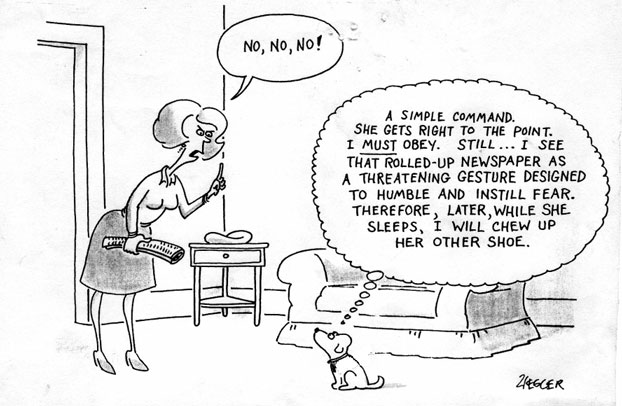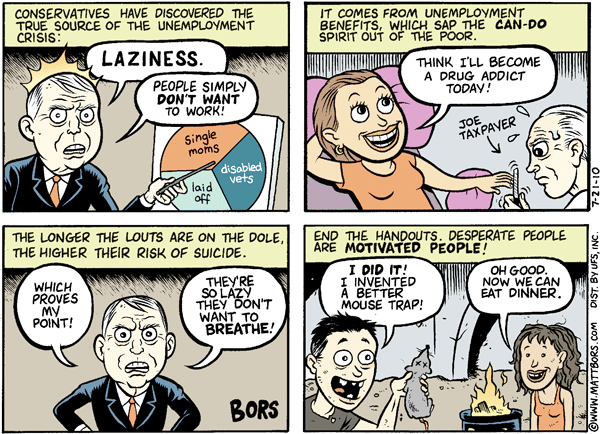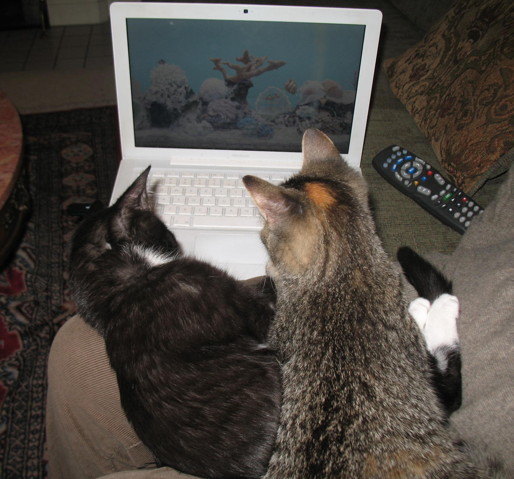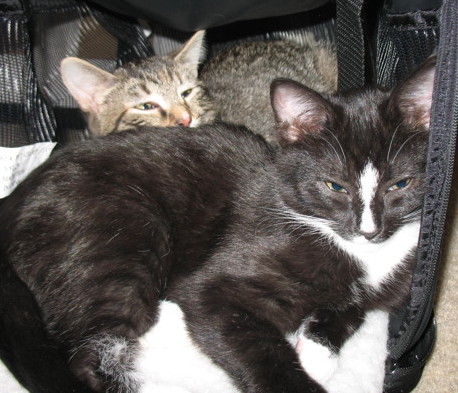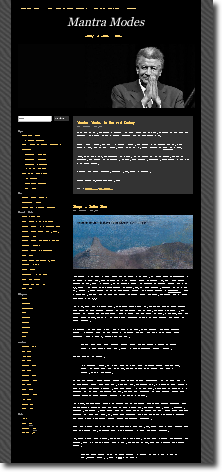The Holy Chicken of Life & Music from NOMINT on Vimeo.
Monthly Archives: December 2010
What, no there/their?
Ten Most looked-up words (Merriam-Webster for 2010)
1. Pretentious
2. Ubiquitous
3. Love
4. Cynical
5. Apathetic
6. Conundrum
7. Albeit
8. Ambiguous
9. Integrity
10. Affect / Effect
Flash poem:
APATHETIC
cynical love
pretentious integrity
albeit
ambiguous affect
ubiquitous effect
conundrum!
Filed under linguistics, poetry
Catscape
I enjoy giving our cats nicknames, so Glori has earned with ease the nickname ‘Stretch.’
Filed under cats
Light Strokes
Artist: Random International
Installation at Sadler’s Wells
for Wayne McGregor’s production of Far | Random Dance Company
Working at the fringes of innovation in science, art and design, rAndom International have developed a series of projects and installations that aim to re-interpret the ‘cold’ nature of digital-based work by providing the viewer with the opportunity for a more hands-on experience with technology. Their work emphasizes the ephemeral quality of information, harbors an intense curiosity toward experimental processes, and includes a body of diverse installations, commissioned works, and performance projects. More recently, rAndom International has investigated the potential of endowing usually inanimate objects and environments with behavioral qualities. As part of their evolving relationship with Wayne McGregor | Random Dance. src
Filed under creative captures
Zen Story: Cyclin’
A Zen Teacher saw five of his students return from the market, riding their bicycles. When they had dismounted, the teacher asked the students, “Why are you riding your bicycles?”
The first student replied, “The bicycle is carrying this sack of potatoes. I am glad that I do not have to carry them on my back!” The teacher praised the student, saying, “You are a smart boy. When you grow old, you will not walk hunched over, as I do.”
The second student replied, “I love to watch the trees and fields pass by as I roll down the path.” The teacher commended the student, “Your eyes are open and you see the world.”
The third student replied, “When I ride my bicycle, I am content to chant, nam myoho renge kyo.” The teacher gave praise to the third student, “Your mind will roll with the ease of a newly trued wheel.”
The fourth student answered, “Riding my bicycle, I live in harmony with all beings.” The teacher was pleased and said, “You are riding on the golden path of non-harming.”
The fifth student replied, “I ride my bicycle to ride my bicycle.” The teacher went and sat at the feet of the fifth student, and said, “I am your disciple.”
Filed under experiential learning, zen
(ARK) Table Mountain
Table Mountain (S.Calhoun 2010)
‘Appropriated Random Kitsch’ or ARK. Theme is the one place in the entire universe I’d like to visit the most.
(chosen, appropriated frames: using Dreamlines; hat tip to programmer Leonardo Solaas)
Filed under visual experiments, my art
Bernie Gets It

Ok, got your attention…
…and he always has.
His twitter stream His history-making fillibuster (CSPAN search result) from December 10. Bernie Sanders
If there is a poor man among your brothers in any of the towns of the land that the LORD your God is giving you, do not be hardhearted or tightfisted toward your poor brother. There will always be poor people in the land. Therefore I command you to be openhanded toward your brothers and toward the poor and needy in your land. (Deuteronomy 15:7, 11)
Is not this the kind of fasting I have chosen: to loose the chains of injustice and untie the cords of the yoke, to set the oppressed free and break every yoke? Is it not to share your food with the hungry and to provide the poor wanderer with shelter– when you see the naked, to clothe him, and not to turn away from your own flesh and blood? …and if you spend yourselves in behalf of the hungry and satisfy the needs of the oppressed, then your light will rise in the darkness, and your night will become like the noonday. (Isaiah 58:6-7;10)
Next, the Biblical text extolling favoring the wealthy over the poor:
“!“
Barry Deutsch : The 24 Types of Libertarian
Filed under humor
Reduced Bateson Set: III. Set Up; Actuality Matters

(I continue musings which exemplify what I’m musing about. This is the set up to my presenting a schema, the Reduced Bateson Set, I can use to interpret my experience of other person’s presentation of information. Caveat: I am entertaining here an informal perspective. My eventual goal is to connect this perspective with further musings on adult learning.)
Although it may count as one of my most abstruse attempts at communicating complex, ‘softly’ phenomenological discoveries about the exchange of knowledge between persons, between human systems of awareness, the previous post in this series nevertheless entertains several main points. Its first point was that seemingly simple systems of human action do not yield answers to simple questions. The second point was these unanswerables are apparently due to incapacities in both formal and heuristic means for deriving answers and making accurate predictions. The third point was that in a discussion among persons who bring into the discussion differing perspectives and approaches, this discussion productively can happen irrespective of pertinent differences found or implicit in individual perspectives and/or approaches.
Here’s a mundane example. Your car needs a repair. You take it to the mechanic and discuss its ill symptoms. The mechanic sketches some possible causes. You don’t know much about how cars work. The mechanic does know how cars work. Yet, you have a discussion about what’s possibly wrong with your car. In this example, you and the mechanic share the assumption you the car owner do not need to know how a car works, as a condition for having the discussion. However, if you say to yourself, “I really don’t know what he’s talking about since I don’t know how a car works,” then it would be the case that you hold a different assumption. In fact, this different assumption could prove to be decisive. Still, you and the mechanic can have a discussion.
I’m not qualifying, in setting out this example, whether this kind of a discussion is a good or bad kind of discussion. The suggestion is: these kinds of discussions are common.

Another example. A friend once shared a description of their spirituality. The key element of the description was their belief in a single God. I asked my friend if he understood this God to be the God of All. We clarified that I was asking whether this singular God could be defined as being behind or above ‘everything’. He put it that his definition of God could be reduced to a complex proposition:
“God is first, God is last, God is in relation to all phenomena.”
I asked my friend,
“Then your God is also the God the other Abrahamic faiths believe in?”
He had never pondered this. We talked it over, with me suggesting the following implication of the proposition.
“If there is a God of All, then this God is also in relation to those who do not believe in this God.”
On one hand, in this example I’m striving to understand a very fundamental feature of his proposition, while, on the other hand, there’s no reason we could not have discussed his spirituality without attending to the proposition in this particular way. I don’t have to know how his God works to engage in a discussion about his God.
Another example. If I remember correctly, Ludwig Wittgenstein sharply criticizes the method of Freudian analysis by pointing out that the psychoanalyst chooses the element in the analysand’s chain of association that is of psychoanalytic, and potentially curative, interest. Well, by what right understanding of how the psyche works is this a fruitful intervention? The analysand, in this example, is taking symptoms to a different kind of mechanic.
In the same vein, I can discuss Jung’s analytic psychology without entering into this discussion the very basic assumption that holds that there is no substantial empirical evidence able to demonstrate the implicit understanding that each and every human psyche in actuality reflects the structural model given by Analytic Psychology. On one hand, this is a big problem at the level of foundational assumptions, on the other hand it doesn’t have to subvert a fruitful discussion.
I’m sensitive to foundational assumptions. Often hidden, nonetheless these basic assumptions are related to the content of most common kinds of discussions. (‘Discussion’ here is used also as shorthand for many other kinds of communicative acts.) It was fascinating in 2008 as the financial crisis unfolded to read and discuss what different people thought were its causes. That discussants had no substantial idea about how Fannie Mae and Freddie Mac are actually operationalized in the system of finance does not prevent peoples’ productive discussion about possible causes.
For example, at times in my work life I’ve been told what a marketing plan is to be. I often choose to overlook the plan’s mistaken (to me) assumptions about what are the facts (of mechanics, or operations, or contingencies in the market,) so I can proceed to my role in the plan. The plan doesn’t really make sense, yet this does not prevent discussing it. This doesn’t mean my view is correct. This only means I believe it to be correct given unexamined, or presumptive, or, missing, or, poorly formed, assumptions, suppositions, assertions of factitude, etc..
Obviously, the following point is not profound. Discussions may implicate assumptions which could be part of the discussion, but are not brought into the discussion. Some assumptions could disrupt the discussion, yet these same assumptions are not entertained in the discussion.
Discussions, etc., have consequences. The auto mechanic goes fishing. The inept marketing plan unfolds. Deadly force is unleashed on Iraq even though the assumption that there are WMD is mistaken. The rationales for the Iraq war constitute a series of mistaken assumptions which yielded mountains of productive discussion, even given that assumptions implicit within these discussion were abject.
The Reduced Bateson Set provides, among its six factors, a factor for analysis of whether or not a presentation of knowledge or understanding both depends on, and is informed by, an accurate estimation of what is actually materially, (or positively,) true as a matter of spoken or unspoken knowledge or understanding.
Filed under adult learning, Gregory Bateson
Fishin’ Sort of
Somewhat in alignment with the Bateson motive, here’s our two new cats, in some relation to an aquarium screensaver. I installed a demo of on my wife’s Macbook.
Glori, the mostly black short hair cat, and, Sassy, the tiger short hair, have enhanced our quality of life since we were almost forced to bring them into our abode in mid-October, after Kate, finally bowed out at almost 19 years of age.
We’re both cat people, and I’d add we’re inveterate cat people. But, I haven’t been in the land of kittens for almost 30 years, and my wife Susan has never had the delicious experience. Since we had it pretty good before, let me tell you what I mean by ‘enhanced.’ For one thing, we have to be careful where we step. The main thing is how much we both look forward to coming back to this land and its amusements. We anthropomorphize our furry children, calling them our daughters and doing so to the extent my step-son, Susan’s son, Matt is now their brother.
By far the finest consequence for me personally is that I get to hear my wife’s laughter even more than usual. Her laughter is by far my favorite sound in the world.
I like to study our kittens’ behavior. I guess this makes me an informal ethologist. Anyway, the two female kittens came from different litters, took to each other over the course of their first half day together, and, yet have established a pecking order too with Glori being the alpha. As far as the shelter was concerned the two kittens were the same age, born around the middle of August. Our vet thinks it likely Glori is a couple of weeks older. She’s definitely 30% bigger. Sassy is deferential at times. We’ve had to protect her food dish. In fact, Glori will go through part of her food and then try to take over Sassy’s bowl.
Still, at the same time, both kittens spend large amounts of time wrestling and chasing each other. Sassy holds her own with her alpha playmate, yet Glori will at times put her foot down, so-to-speak. Both girls handled the influx of relatives over Thanksgiving, including nieces and nephews, oh, and brother, just fine. Also, both are inquisitive.
Sassy was found and fostered very early on, maybe within a week of being born, so she is a wool sucker, although she doesn’t eat into the sweater or what-have-you. Glori, meanwhile, I called the zen cat. Susan calls her the chill kitty. Now, I call Glori the yoga kitty to acknowledge how she likes to stretch in any number of positions, including on her back with her legs up in the air, and, the same, but with her head hanging down off the back of the couch. Glori’s a bit more athletic than her half-sister (!) and has a vertical leap that exceeds her tale-to-nose length of about 20 inches. Both cats usually break into a motoring purr as soon as either of us pick either up, yet neither are lap kitties. They mostly like to hang nearby, lounge next too, but not upon either of us, with Susan sometimes proving to be the exception to this.
Sassy likes to look at the TV should the picture have some motion in it and dialog. She’ll sit below it and gaze at the screen for minutes, up to about five minutes–a mountain of focused time in Kitty land. I’m reminded it is not clear how the human system of awareness can capture the actuality of the feline system of something like awareness, interest, etc.. …a mild Batesonian point, if you will.
excerpt I. In 2004 Jean-Denis Vigne of the National Museum of Natural History in Paris and his colleagues reported unearthing the earliest evidence suggestive of humans keeping cats as pets. The discovery comes from the Mediterranean island of Cyprus, where 9,500 years ago an adult human of unknown gender was laid to rest in a shallow grave. An assortment of items accompanied the body–stone tools, a lump of iron oxide, a handful of seashells and, in its own tiny grave just 40 centimeters away, an eight-month-old cat, its body oriented in the same westward direction as the human’s.
Because cats are not native to most Mediterranean islands, we know that people must have brought them over by boat, probably from the adjacent Levantine coast. Together the transport of cats to the island and the burial of the human with a cat indicate that people had a special, intentional relationship with cats nearly 10,000 years ago in the Middle East. This locale is consistent with the geographic origin we arrived at through our genetic analyses. It appears, then, that cats were being tamed just as humankind was establishing the first settlements in the part of the Middle East known as the Fertile Crescent.
excerpt II. Considering that small cats do little obvious harm, people probably did not mind their company. They might have even encouraged the cats to stick around when they saw them dispatching mice and snakes. Cats may have held other appeal, too. Some experts speculate that wildcats just so happened to possess features that might have preadapted them to developing a relationship with people. In particular, these cats have “cute” features–large eyes, a snub face and a high, round forehead, among others–that are known to elicit nurturing from humans. In all likelihood, then, some people took kittens home simply because they found them adorable and tamed them, giving cats a first foothold at the human hearth.
excerpt III. The wide range of sizes, shapes and temperaments seen in dogs–consider the Chihuahua and Great Dane–is absent in cats. Felines show much less variety because, unlike dogs–which starting in prehistoric times were bred for such tasks as guarding, hunting and herding–wildcats were under no such selective breeding pressures. To enter our homes, they had only to evolve a people-friendly disposition.
So are today’s cats truly domesticated? Well, yes–but perhaps only just. Although they satisfy the criterion of tolerating people, most domestic cats are feral and do not rely on people to feed them or to find them mates. And whereas other domesticates, like dogs, look quite distinct from their wild ancestors, the average domestic cat largely retains the wild body plan. It does exhibit a few morphological differences, however– namely, slightly shorter legs, a smaller brain and, as Charles Darwin noted, a longer intestine, which may have been an adaptation to scavenging kitchen scraps.
The Taming of the Cat. By: Driscoll, Carlos A., Clutton-Brock, Juliet, Kitchener, Andrew C., O’Brien, Stephen J., Scientific American, Jun2009, Vol. 300, Issue 6
Our previous vet, once had a bumper sticker that read:
Dogs have masters,
Cats have staff.
One of Gregory Bateson’s most important (and well-known,) papers became the chapter, A Theory of Play and Fantasy, in Steps To An Ecology of the Mind. Here’s enough of an excerpt to allow you to draw the connection with the land of kittens.
(3) The first definite step in the formulation of the hypothesis guiding this research occurred in January, 1952, when I went to the Fleishhacker Zoo in San Francisco to look for behavioral criteria which would indicate whether any given organism is or is not able to recognize that the signs emitted by itself and other members of the species are signals. In theory, I had thought out what such criteria might look like—that the occurrence of metacommunicative signs (or signals) in the stream of interaction between the animals would indicate that the animals have at least some awareness (conscious or unconscious) that the signs about which they metacommunicate are signals.
I knew, of course, that there was no likelihood of finding denotative messages among nonhuman mammals, but I was still not aware that the animal data would require an almost total revision of my thinking. What I encountered at the zoo was a phenomenon well known to everybody: I saw two young monkeys playing, i.e., engaged in an interactive sequence of which the unit actions or signals were similar to but not the same as those of combat. It was evident, even to the human observer, that the sequence as a whole was not combat, and evident to the human observer that to the participant monkeys this was not combat.
Now, this phenomenon, play, could only occur if the participant organisms were capable of some degree of meta-communication, i.e., of exchanging signals which would carry the message “this is play.
—
(6) Threat is another phenomenon which resembles play in that actions denote, but are different from, other actions. The clenched fist of threat is different from the punch, but it refers to a possible future (but at present nonexistent) punch. And threat also is commonly recognizable among non-human mammals. Indeed it has lately been argued that a great part of what appears to be combat among members of a single species is rather to be regarded as threat (Tinbergen,64 Lorenz65).
—
(8) We might expect threat, play, and histrionics to be three independent phenomena all contributing to the evolution of the discrimination between map and territory. But it seems that this would be wrong, at least so far as mammalian communication is concerned. Very brief analysis of childhood behavior shows that such combinations as histrionic play, bluff, playful threat, teasing play in response to threat, histrionic threat, and so on form together a single total complex of phenomena. And such adult phenomena as gambling and playing with risk have their roots in the combination of threat and play. It is evident also that not only threat but the reciprocal of threat?—the behavior of the threatened individual?—are a part of this complex. It is probable that not only histrionics but also spectatorship should be included within this field. It is also appropriate to mention self-pity.
From the chapter, Redundancy and Coding.
(7) This still leaves unexplained the shift from communication about interaction patterns to communication about things and other components of the external world. This is the shift which determines that language would never make obsolete the iconic communication about the contingency patterns of personal relationship.
Further than that we cannot at present go. It is even possible that the evolution of verbal naming preceded the evolution of the simple negative. It is, however, important to note that evolution of a simple negative would be a decisive step toward language as we know it. This step would immediately endow the signals— be they verbal or iconic—with a degree of separateness from their referents, which would justify us in referring to the signals as “names.” The same step would make possible the use of negative aspects of classification: those items which are not members of an identified class would become identifiable as nonmembers. And, lastly, simple affirmative indicative statements would become possible.Conscious Purpose versus Nature*
Here, of course, we’ve left the land of kitties.
Filed under Gregory Bateson
What If Your Parents Had Never…?
In my continuing research into what I term transformative anthropology, or, into developmental serendipity in the human life cycle, every question or speculation is worth investigation. This includes questions considered ridiculous:
“What if your parents had never met?”
To which I respond: Indeed. (So, I gently pull it into my mental lab.)
I had an opportunity this fall to pose clinical-like questions to one of my softball associates, a pediatrician, Dr. Art. What I was wondering about was whether or not it would be equally correct, given the what if you’re parents never met query, to pose a similar question: “What if your, (or my own, or anybody’s,) parents had instantiated the fertilization at some other timely point, say seconds, minutes, hours, the next day, later, other than at the time at which point you, me, anybody came to be?”
Here’s the encapsulation of my questioning of Dr. Art.
Given the chanciness of what comes together at point of fertilization, is it correct to state that the fertilization that produced me, you, anybody, exactingly reflects the outcome of a single and unique outcome of sperm meeting egg? (In other words, fertilization is not able to be comprehensively duplicated in anyway.)
Okay, so, the nature of fertilization is a spectacular instance of something, a human he or she, in its generative case, created and necessarily from this, completely unique.
Dr. Art’s answer was,
“As far as anybody can know, human fertilization causes a unique person.”
Its instance comes down to a singular event and a rapid unfolding of unique configuration. This is entirely given by the nature of the mechanics involved. A different instantiation would unfold under the slightly different conditions given by these same mechanics.
Several aspects of this (class of) instance figure into how one thinks about it–as a matter of these mechanics. Fertilization’s uniqueness is not repeatable. Nor is this like shuffling a deck of cards or rolling the dice. The unique result is singularly so. There are many many possible outcomes when the deck is shuffled. Yet, over time, and with enough shuffles, the outcomes aren’t singularly unique. Likewise if we pose such an instance as a roll of the dice. I don’t know what a rigorous mathematically-minded appreciation of the consequential uniqueness of fertilization would be, yet I suspect the analogous two dice have to have an odd, not finite, configuration.
The scale of the temporal condition is something like: instantaneous, yet this also reflects the physical conditions through which fertilization happens as a result of one sperm actor, so-to-speak, being successful against all the other actors. It’s a measurable amount of time too, this instant.
A consequence of this set-up is that the instantiation of one’s own self hangs on the slender thread of these conditions. If Marvin Gaye comes on the CD player, and one of the parties to conception gasps, “Hold On!” then the internal process will be configured differently. Yet, consider how even this kind of adjustment occurs at an almost ridiculously huge scale given how the outcome of fertilization is itself contingent on the tiny scale at which the jockeying of sperm happens.
Perhaps, say you, “So what?”
As I mentioned, I take this seriously because I’m researching the element of fortuity as it plays a part in the resolution of human development at any scale of condition or time. I’m tracking back here to what I term the primordial biological dependent contingency. This is where any map of fortuitous contingency tracks back to. However, at the same time, there is also the implicit regress, ‘what if your parents’ parents had never met?’ And, the circumstances for consequential conjoinment, and for relationship, are entangled in vast, requisite ‘narratives’ for which all the necessary human players, and time-and-space, features necessarily are in some exacting way configured by long chains of, well, fertilization!
Backing up from this, we can sift through other consequences (of primordial biological dependent contingency) at much larger scales of relationship and agency. The evolutionary perspective warrants consideration of where this all can be said to commence and how the two, at least, most primal actors came to make something like the first instance, and how the original hims and hers were instantiated in kind.
Also recognized are other perspectives and the explanations or suppositions each invokes. The idea that a unique soul animates the physical instance of fertilization is, obviously, a very ancient idea. This same idea is deeply embedded in many varieties of how persons culturally grappled with the presumably self-evident unique outcome of procreation. Actually, is there a good reason to presume even this was so? I’m willing to wager without knowing–yet–conceptions about the soul finding its physical incarnation predate ideas about every born human constituting an utterly unique instance of human being.
Obviously, fortuitous dependencies track backward from biological scales ‘down and further’ back through material and temporal scales. My main research interest lies in the other direction, long after the presumptive collapse of enjoined human wave functions (!) granted in fertilization have occurred. Still, it would remain true enough that the serendipity decisive in later human development all are in the light of the strange and implicit fragility of fertilization, and, the: “I might never have come to be!”
Except for this crucial feature: successful fertilization and thus the biological evocation of a him or her sets up this new person as a unique in stance of human being, but is not the whole story by any means.
So much for the notion that DNA determines what an organism is like; it doesn’t. There is, in principle, no one-to-one relationship, no “mapping,” from DNA sequences to characters. (Of course, we can map differences of character– like albinism or Parkinson’s disease–to species differences in DNA.) The whole process of development, from ovary- making egg to mother-making ovary, holds itself together. Each bit of information context, like the egg mechanisms, is necessary and specific for each bit of information content, like the DNA. What makes the fly, or you, is the complete process of development. All of it. Can you blame your DNA for your funny squiggly handwriting, your passion for Fats Waller and
Burmese cats, your blue eyes! Well, perhaps the last, but certainly not the others. You can’t blame the DNA for what you’ve made of yourself. You, the process, are responsible for what you are, what you do. And for what you become. (biologist Jack Cohen)
Filed under my research, serendipity
Mantra Modes Revived
Mantra Modes, The Artistry of Abdullah Ibrahim, was one of my very first web initiatives. It was developed in 1996 and then published as part of the old Hoon Web. I have dragged it into the 21st century after the site had been off the stove top for six years.
Mantra Modes is attached to the squareONE web domain, and linked via nogutsnoglory studios, my music-oriented blog. I also hope to give some attention to Rhythm River, the squareONE site focused on the Rhythm River imaginal musicology experiential learning tool.
If you are unfamiliar with Abdullah Ibrahim, he is without any question the most sophisticated and subtle–and it could be argued–important, musician the continent of Africa has produced so far. Born in South Africa in 1934, Ibrahim, once known as Dollar Brand, returned to a free South Africa in 1995. He has been playing, performing and recording his distinctive South African people’s music since the late fifties.
I could go on and on about Dr. Ibrahim because he is second-to-none for me. Suffice to hope you’ll investigate his artistry anyway you can. I’ll be slowly updating the Mantra Modes blog. | RSS |
Here’s a taste via youtube.
Filed under music

